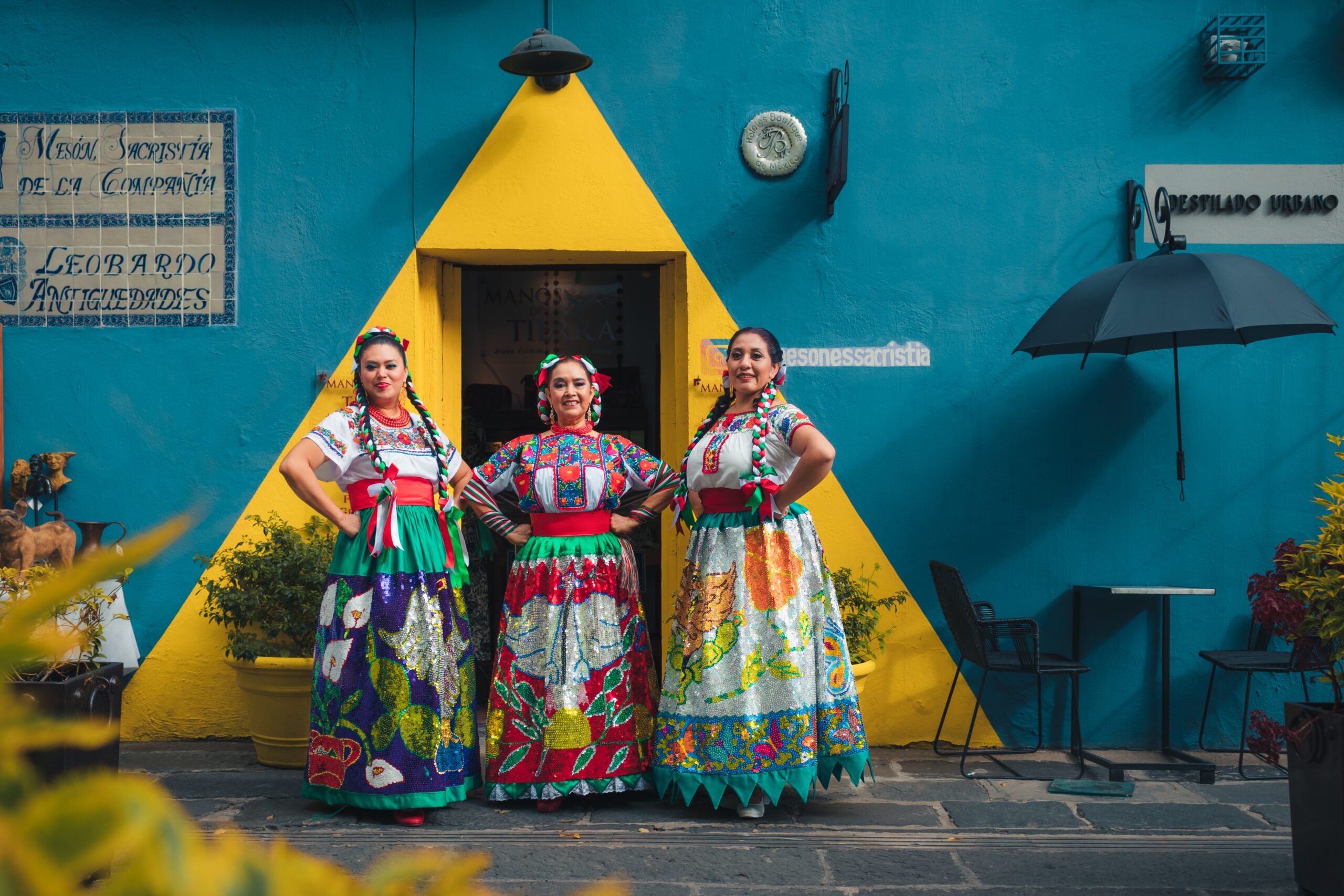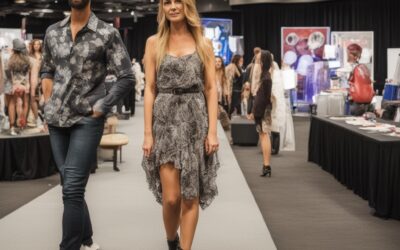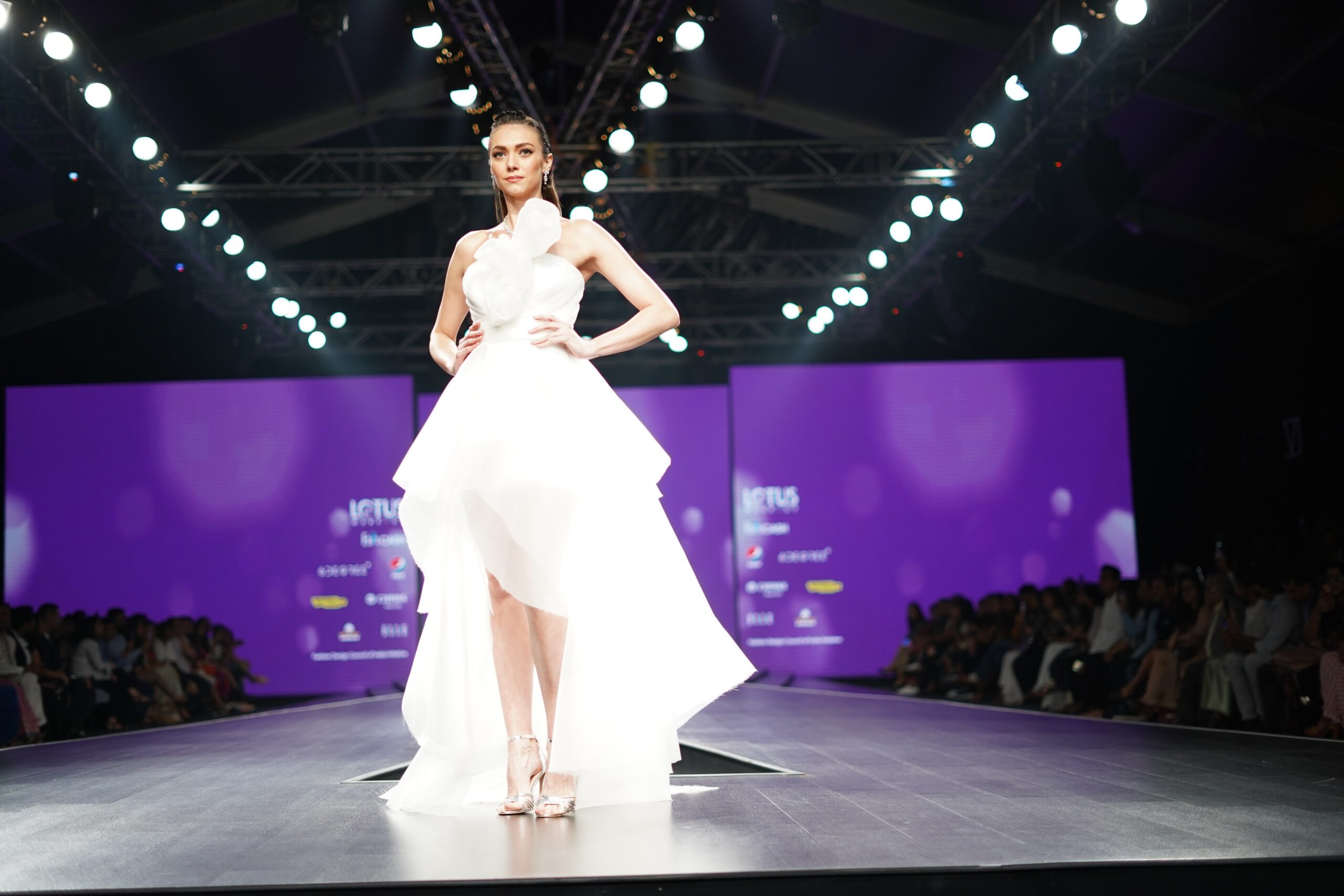Let’s kick off this journey of exploring the vibrant landscape of Latin American fashion, as beautifully exhibited at Fashion Week in Mexico. One of the globe’s premier destinations for fashion enthusiasts, Mexico City truly turns into a vibrant canvas of artistry, creativity, and sophistication during this grand event. Each year, the event echoes the rich cultural tapestry and pulsating rhythm of Latin America, through the lens of sartorial elegance. With an intriguing blend of traditional and contemporary aesthetics, the fashion week mirrors Mexico’s soul, making it an unmissable spectacle for those captivated by the allure of style and design.
Moreover, the grandeur of the fashion week in Mexico event extends far beyond the runway. It encapsulates the city’s spirit, with its infectious energy trickling down to the streets, restaurants, and bars, transforming the city into a fashion paradise. So, whether you’re a fashionista hunting for the next big trend, an aspiring designer seeking inspiration, or someone fascinated by the dynamism of fashion, this immersive experience is sure to leave an indelible impression.
Exuberance of Color
Latin American fashion is synonymous with a rich, vibrant palette, and Fashion Week in Mexico is no exception. The event was an absolute carnival of colors, representing the liveliness of Latin America. Designers played with a spectrum of hues, from fiery reds and intense oranges to deep blues and sunny yellows, evoking images of sunsets over picturesque landscapes and Mexico’s breathtaking natural beauty.
Take, for instance, the collection by renowned designer, Lucia Mendez, who leveraged the allure of warm tones to depict the passionate spirit of Latin America. Her line, a vivid melange of scarlet reds and tangerine oranges, was like a beautiful sonnet to fiery Mexican sunsets. This wasn’t merely fashion; it was a celebration of Mexico’s rich cultural identity and landscapes.
But it wasn’t just the intensity of colors that stood out; it was also the combination. Designers boldly paired contrasting shades to create striking ensembles. Remember the collection from emerging talent Carlos Moreno? His play on cobalt blue and fiery red created a compelling visual drama that was as bold as it was beautiful, demonstrating the fearlessness of Mexican design.
Moreover, this celebration of color wasn’t limited to clothes. Make-up artists and hairstylists echoed this vibrancy, creating looks that complemented the designer’s visions. The show was a testament to the fact that when it comes to Latin American fashion, colors are not just an element, they are a statement.
Finally, this exploration of color in fashion also serves to inspire spectators and aspiring designers. It provides a lesson in fearlessly experimenting with color, encouraging you to step out of your comfort zone and embrace the colorful possibilities of fashion. After all, isn’t that what fashion is all about – expressing oneself boldly and beautifully?
Embracing Diversity
Fashion Week in Mexico stands as a testament to the diversity that is integral to the cultural fabric of Latin America. It provided a platform to a myriad of designers, each bringing distinct perspectives and aesthetics that echoed the diverse cultural narratives of the continent.
For instance, Diego Sierra’s collection was a heartfelt tribute to his Afro-Mexican heritage. He successfully married traditional African textiles with contemporary Mexican silhouettes, creating a style narrative that was as diverse as it was compelling. The fashion week was a platform for him, and designers like him, to proudly showcase their unique heritage and its influence on their creative expression.
On the other side of the spectrum, were collections that captured the essence of indigenous cultures. Micaela Gomez, an indigenous designer, wowed everyone with her collection that beautifully integrated indigenous craft techniques into modern designs. Her show was an invitation to explore Mexico’s rich history and appreciate its relevance in the contemporary fashion landscape.
Apart from these, the event also saw inclusivity in terms of models, where people of all shapes, sizes, and backgrounds strutted down the runway with aplomb. There was no singular, stereotypical model look. Instead, the diversity of models celebrated the idea that fashion is for everyone.
This emphasis on diversity was also a boon for the attendees. For aspiring designers, it was a lesson in how to infuse personal and cultural narratives into their work. For others, it was an opportunity to broaden their style horizons and experiment with new, diverse trends.
Sustainability in Style
The “green wave” in fashion was palpable at Fashion Week in Mexico. Sustainability was not just a trend; it was the backbone of many collections, with designers showcasing a commitment to environmentally friendly practices.
Leading the pack was renowned designer, Ana Gonzalez, who showcased a stunning collection entirely made from recycled materials. Her vision of transforming discarded elements into high fashion was both innovative and inspirational. The collection was not just about creating beautiful clothes, but about giving back to the planet, demonstrating the potential of sustainable fashion.
The event also saw a rise in the use of organic, locally sourced materials. Take, for instance, Carlos Perez’s collection. He incorporated organic cotton and natural dyes into his designs, bringing an eco-friendly touch to his modern silhouettes.
Moreover, several designers showcased collections crafted from “deadstock” fabrics, thus promoting the idea of zero waste. It was heartening to see the fashion industry, often criticized for its environmental impact, making strides towards sustainability.
This commitment to sustainability served as a lesson for everyone – designers, fashion enthusiasts, and consumers alike. It reminded us of our responsibility towards the planet, nudging us to make more conscious fashion choices. After all, being stylish and being sustainable are not mutually exclusive.
Storytelling Through Fashion
The ramp of Fashion Week in Mexico was akin to a stage where designers narrated compelling stories through their collections. Each piece was not merely an ensemble but a narrative, a glimpse into the designer’s inspiration and creativity.
One such captivating story was told by designer Elena Santos. Her collection, inspired by Frida Kahlo’s life and art, was a stunning tapestry of colors, textures, and patterns. Each outfit seemed to tell a different chapter of Frida’s life, capturing her spirit and resilience beautifully.
Another designer, Marco Sanchez, wove a gripping narrative through his collection themed on Mexican folklore. His intricate embroideries and symbolic motifs brought age-old legends and myths to life, offering an intriguing mix of fashion and storytelling.
Moreover, for attendees, these stories were not just captivating to watch but also enriched their understanding of fashion. They served as an inspiration to view fashion not merely as clothing, but as a medium of self-expression and storytelling. It is these stories that make fashion personal, meaningful, and memorable.
Innovation and Technology
Fashion Week in Mexico was a testament to the harmonious marriage between fashion and technology. Many designers leveraged technology, not only to enhance their designs but also to revolutionize the way fashion is presented.
Several designers used digital printing techniques to create intricate patterns and vibrant color palettes on their fabrics. This technology allowed designers to push the boundaries of creativity, crafting designs that were previously unimaginable.
Fashion shows themselves have been reinvented, with some designers presenting their collections through virtual reality. Attendees were provided VR headsets, allowing them to dive into the designer’s world and experience the collection in an immersive, 360-degree environment. This use of technology transformed the traditional runway experience into a more interactive and engaging spectacle.
But the innovation didn’t stop there. Sustainable technology also found its way onto the runway. Designers showcased garments created using 3D printing and bio-fabrication techniques. These technologies not only reduce waste but also allow designers to create complex shapes and structures, thus opening a whole new realm of possibilities for fashion design.
These innovative practices serve as an eye-opener for everyone – it highlights the potential of technology in revolutionizing fashion. For aspiring designers, it offers a glimpse into the future of fashion, encouraging them to embrace technology in their creative process. For fashion enthusiasts, it provides a fresh, modern perspective on fashion, making their experience more engaging and interactive.
Revival of Traditional Techniques
One of the most striking elements of Fashion Week in Mexico was the reverence for traditional craftsmanship. Several designers integrated traditional techniques and motifs into their collections, thereby paying tribute to Mexico’s rich cultural heritage.
For instance, Rafael Zuniga’s collection was a beautiful fusion of age-old weaving techniques and contemporary silhouettes. The intricate handwoven patterns on his garments reflected the time-honored skills of local artisans, thus adding a unique charm to his collection.
Similarly, designer Gabriela Sanchez used traditional Mexican embroidery in her collection. Each piece was a work of art, showcasing the exquisite precision and artistry that goes into this time-honored craft.
These collections served as a reminder of the rich cultural treasure trove that is Mexican craftsmanship. They shed light on the importance of preserving these traditional techniques, not only for their aesthetic value but also for their cultural significance.
For the attendees, this emphasis on traditional crafts provided a fresh perspective. It encouraged them to appreciate the beauty of handcrafted pieces and consider them while curating their own style. It’s about realizing that fashion isn’t just about following the latest trends; it’s also about understanding and appreciating the craft behind the garment.
Bold and Experimental Designs
Fashion Week in Mexico was a playground for designers to showcase their creativity and break away from conventional design norms. The runway was ablaze with bold, experimental designs that pushed the boundaries of what fashion can be.
Take, for example, the avant-garde collection by Esteban Cortazar. His unconventional use of materials, radical silhouettes, and dramatic detailing turned heads, inviting onlookers to question and explore their understanding of fashion.
Similarly, the gender-fluid collection by Alexia Ulibarri blurred the lines between traditionally masculine and feminine styles, encouraging a more inclusive, fluid perception of fashion.
These experimental collections were not just visually arresting, but they also sparked conversations around the evolving nature of fashion. They encouraged attendees to break free from stereotypical fashion norms and embrace their individual style narratives.
For aspiring designers, it was an invitation to think outside the box and not be afraid to challenge fashion conventions. For the fashion-conscious, it was an opportunity to explore and embrace unconventional trends, paving the way for a more personal, expressive style statement.
The Power of Accessorizing
At Fashion Week in Mexico, accessories were more than just finishing touches; they were integral elements that completed the storytelling of each ensemble. From statement jewelry pieces and quirky handbags to bold footwear and dramatic headpieces, accessories were used to accentuate and enhance the overall aesthetic of the collections.
Designers like Lucia Mendez made a bold statement with oversized earrings and neckpieces that echoed the vibrant energy of Latin American aesthetics. On the other hand, Carlos Moreno’s collection saw models strut down the runway in brightly-hued, handcrafted footwear that perfectly complemented his vivid garments.
Additionally, accessories served as a canvas for designers to showcase their craftsmanship and attention to detail. This was seen in Marco Sanchez’s collection, where intricately beaded handbags mirrored the symbolic motifs present in his garments, adding depth to his storytelling.
The prominence of accessories served as a reminder for attendees about the power of accessorizing in elevating a look. It encouraged them to experiment with different types of accessories, pushing them to step out of their comfort zones and make bold style choices.
The Business of Fashion
While the glamour and creative aspect of Fashion Week in Mexico were certainly the focal points, the event also highlighted the business side of fashion. From networking opportunities to brand-building, the event was a valuable platform for designers to grow their businesses.
Emerging designers got the opportunity to showcase their collections to a global audience, helping them gain recognition and attract potential buyers. Established designers used the event to reinforce their brand identity and expand their customer base.
Moreover, fashion merchandising was a significant aspect of the event. Designers had the chance to collaborate with retailers and secure orders, thus enhancing their market presence.
For attendees interested in the business side of fashion, the event provided valuable insights. They got a glimpse into how fashion brands operate, the significance of networking, and the importance of strategic brand positioning.
The Overall Experience
Fashion Week in Mexico was not just a fashion event; it was a cultural extravaganza. The fusion of music, art, and fashion created an immersive experience that transcended the traditional confines of a fashion show.
Local musicians set the rhythmic pulse for the runway shows, their tunes reflecting the vibrant energy of Mexico. Art installations added a creative dimension to the event, enhancing the visual appeal and providing a platform for local artists to showcase their work.
Moreover, the event was a social gathering, where people from different backgrounds came together to celebrate their shared love for fashion. The camaraderie, excitement, and energy that permeated the event added to the overall experience.
Whether you’re a fashion enthusiast, a designer, a businessperson, or a tourist, Fashion Week in Mexico promises an unforgettable experience. It’s more than just about fashion; it’s about the love for creativity, the thrill of discovery, and the joy of shared experiences.
We welcome any suggestions or questions. You can email us or contact us using the contact page.
You can also connect with us on the following social networks:









0 Comments